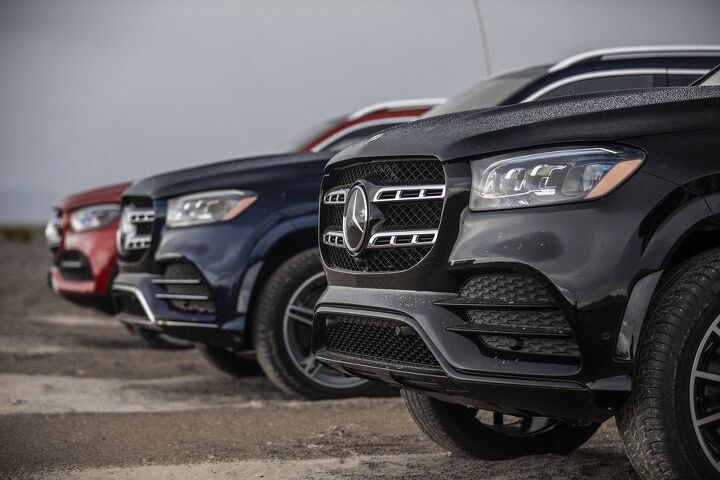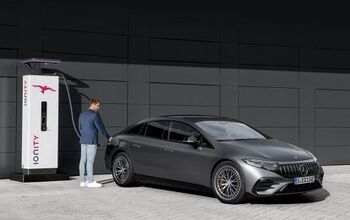Pandemic to Influence Automotive Design; Here Come the Premium Air Filters

With the pandemic altering daily life for just about everyone alive, the slogan “the new normal” has exploded into popular parlance. Everything has changed and nothing, allegedly, will ever be the same. Governments are issuing stringent lockdown orders the likes of which haven’t been seen in our lifetimes, companies are initiating aggressive new health protocols, and gigantic tech firms are deciding what constitutes harmful information online as they act as censors for the public good. Worst of all, there’s little reason to drive anywhere — unless you’re planning on bugging out to live in the woods.
Whatever form society takes after the pandemic subsides, those eerily empty roads probably won’t be among the lingering changes. People are already chomping at the bit to get out there and do something, meaning most folks will return to their road-going ways. Which doesn’t mean COVID-19 won’t have an influence on future designs. Automakers are already mulling the possibility of adding better air filtration systems as a selling point.
Luxury brands have already run with the idea by adding built-in air fresheners, ionizing systems, or superior filtration hardware. In places like China, where air quality is notoriously poor in urban centers, we’ve seen Volvo/Zhejiang Geely Holding run with this concept for years. More mainstream brands have done the same in the Asian market, often offering enhanced air filtration as an optional extra. On high-end luxury models, they’re practically obligatory — regardless of market.
According to Automotive News, manufacturers are considering exporting that type of content globally, now that COVID-19 is in the midst of its world tour. The outlet spoke with several staffers tasked with automotive design, mainly from premium nameplates, and they all see an opportunity to tweak the formula a bit.
“The pandemic will change our perception of how we experience safety and luxury in the future,” explained Daimler’s chief design officer Gorden Wagener. “This can be a challenging but an exciting time.”
While interior air quality is something the industry has worked on for decades, no automaker has taken it to a submicroscopic level for mainstream product. It isn’t obvious that’s what they’re hoping to do moving forward, however. A mobile hazmat suit sounds like it would be expensive to produce and rather ineffective, unless it could test the air around it to indicate when it was safe to open the door. Otherwise you’ll just be exposed to whatever atmospheric horrors await you on the other side.
From Automotive News:
“We are working toward the idea that the car could actually take bad things out of the air, almost clean the air,” Wagener said. “It’s an opportunity to address the sustainability issue that we have already been considering.”
Judging from past history at Mercedes and its competitors, the system would be similar to existing processes that work to remove airborne allergens like car fumes — but would also work on a broader level than just the car itself, effectively and significantly cleaning the air immediately surrounding the exterior of the vehicle.
Mercedes has been exploring such options for decades: In 1989, the Mercedes Benz SL roadster was the first serial production model to come with a standard cabin air filter. By 2017, Mercedes was the first car manufacturer to achieve the asthma- and allergy-friendly certification for its interior cabin air filters from Allergy Standards Ltd. and the Asthma and Allergy Foundation of America (AAFA).
As a city-dwelling nerd, your author enjoys a good filtration system. While widows down is the preferred mode of travel on most fair-weather days, a clever HVAC system makes allergy season more livable and really cuts down on the baked-garbage smell of city living in August. That said, the ability to reliably filtering out pathogens is a lot expect from the next generation of luxury cars. Instead, we’ll probably end up with autos boasting of superior air filtration in regard to airborne pollutants like pollen. A number of automakers have already made meaningful headway on this front. Bold as ever, Tesla has what it calls a “Bioweapon Defense Mode” that uses a HEPA filtration system it claims can remove bacteria from the air surrounding the vehicle.
The other predicted change to automotive design involves a new focus on mental health. Alister Whelan, creative director for interior design at Jaguar Land Rover, said the psychic trauma of a historic pandemic will mean a whole new level of concern for customers. She believes drivers will come to expect “efficiency and total isolation — for their own safety.”
“My young designers keep reminding me that safety isn’t always about size — people will want privacy,” she said.
Designers implied tomorrow’s vehicles would have whisper-quiet interiors (not a new idea) and incognito exteriors aimed at avoiding attention. While tastefully understated bodywork is always desirable, this concept sounds like an good way for designers to avoid being creative. Though it probably takes some amount of skill to design a forgettable car on purpose. Automotive News even discussed the prospect of cloaking devices that would make it possible to “hide the car from governmental officials or thugs, during security breaches on public roads, or help avoid an outright attack.”
Jesus, what kind of future do they think we’re going to be living in?
As automakers work on enhanced driver privacy, most of their invisibility initiatives involve finding ways to see through today’s disgustingly plump A-pillars or providing better visibility while hauling a trailer. Making your car disappear is pure fantasy, especially as the industry ramps up data monitoring on connected vehicles. Privacy stops once it can be digitized and sold to the highest bidder, and it will make the industry a lot more money than selling extravagant HVAC systems.
Fortunately for automakers, the pair aren’t mutually exclusive.
[Image: Daimler]

A staunch consumer advocate tracking industry trends and regulation. Before joining TTAC, Matt spent a decade working for marketing and research firms based in NYC. Clients included several of the world’s largest automakers, global tire brands, and aftermarket part suppliers. Dissatisfied with the corporate world and resentful of having to wear suits everyday, he pivoted to writing about cars. Since then, that man has become an ardent supporter of the right-to-repair movement, been interviewed on the auto industry by national radio broadcasts, driven more rental cars than anyone ever should, participated in amateur rallying events, and received the requisite minimum training as sanctioned by the SCCA. Handy with a wrench, Matt grew up surrounded by Detroit auto workers and managed to get a pizza delivery job before he was legally eligible. He later found himself driving box trucks through Manhattan, guaranteeing future sympathy for actual truckers. He continues to conduct research pertaining to the automotive sector as an independent contractor and has since moved back to his native Michigan, closer to where the cars are born. A contrarian, Matt claims to prefer understeer — stating that front and all-wheel drive vehicles cater best to his driving style.
More by Matt Posky
Latest Car Reviews
Read moreLatest Product Reviews
Read moreRecent Comments
- ToolGuy I was challenged by Tim's incisive opinion, but thankfully Jeff's multiple vanilla truisms have set me straight. Or something. 😉
- ChristianWimmer The body kit modifications ruined it for me.
- ToolGuy "I have my stance -- I won't prejudice the commentariat by sharing it."• Like Tim, I have my opinion and it is perfect and above reproach (as long as I keep it to myself). I would hate to share it with the world and risk having someone critique it. LOL.
- SCE to AUX Sure, give them everything they want, and more. Let them decide how long they keep their jobs and their plant, until both go away.
- SCE to AUX Range only matters if you need more of it - just like towing capacity in trucks.I have a short-range EV and still manage to put 1000 miles/month on it, because the car is perfectly suited to my use case.There is no such thing as one-size-fits all with vehicles.


































Comments
Join the conversation
Good news: Our nice shiny new crossover will filter the air inside your vehicle. Bad news: Our nice shiny new crossover will pump your lungs full of VOC's ("new car smell"). If I were an enterprising product planner, I would explore ozone generation systems which could disinfect the interior of the unoccupied vehicle on a weekly basis (for example). Estimated piece cost ~$30.
Forget cars, when the hell are they going to do this on airplanes, along with some real emphasis on cleaning? And yes, I would definitely pay more to fly with an airline company which made a point of not being a cylindrical petri dish. Assuming we still have airline companies...